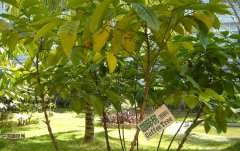Roasting and taste of coffee
Since the Arabs discovered the coffee beans, the first way to eat them is to put the whole fruit of the coffee into the mouth and chew it to get its juice.
Later, they ground the coffee beans from the fruit and mixed them with animal fat as a physical supplement for caravans to trade far away.
After that, around 1000 AD, it was changed to the method of boiling raw beans into soup. It was not until the 13th century that the Arabs invented the method of roasting coffee beans, so that the charming aroma of coffee was completely pulled out, so that coffee was no longer just a pick-me-up, but a worldwide drink.
Generally speaking, according to the division of baking degree, the roughest can be divided into three stages: shallow stir-frying, medium stir-frying and deep frying. Coffee beans can cause subtle changes in taste and flavor due to different degrees of roasting.
Generally speaking, if the baking degree is shallow, the sour taste is heavier. With the deepening of the baking degree, the sour taste will gradually disappear, and the bitter taste will become more prominent. What kind of roasting degree can give birth to the most delicious coffee? In fact, the depth of baking must be based on the types, characteristics, brewing methods, usage and, most importantly, personal preferences, to determine the most appropriate baking degree.
Important Notice :
前街咖啡 FrontStreet Coffee has moved to new addredd:
FrontStreet Coffee Address: 315,Donghua East Road,GuangZhou
Tel:020 38364473
- Prev

Tips for ESPRESSO Baking (selected translations)
Translated from Fresh Cup Magazine's Coffee Almanac,2003 June issue, pp. 36-40, Roasting for Espresso: Implications for Coffee Retailingby David Schomer. Introduction A few years ago, I took a very important coffee course to compare the differences between espresso and other immersion brewing methods (such as French pressure and trickling).
- Next

The origin of coffee trees
The earliest origin of coffee trees is recognized by botanists and the industry as Kaffa province in Ethiopia. Ethiopia is located in the landlocked country of northeast Africa, with many lakes, rivers and rich water resources, which is called the East African Water Tower. The name of the country comes from the Greek word for tanned faces and land inhabited by suntanned people.
Related
- Beginners will see the "Coffee pull flower" guide!
- What is the difference between ice blog purified milk and ordinary milk coffee?
- Why is the Philippines the largest producer of crops in Liberia?
- For coffee extraction, should the fine powder be retained?
- How does extracted espresso fill pressed powder? How much strength does it take to press the powder?
- How to make jasmine cold extract coffee? Is the jasmine + latte good?
- Will this little toy really make the coffee taste better? How does Lily Drip affect coffee extraction?
- Will the action of slapping the filter cup also affect coffee extraction?
- What's the difference between powder-to-water ratio and powder-to-liquid ratio?
- What is the Ethiopian local species? What does it have to do with Heirloom native species?

